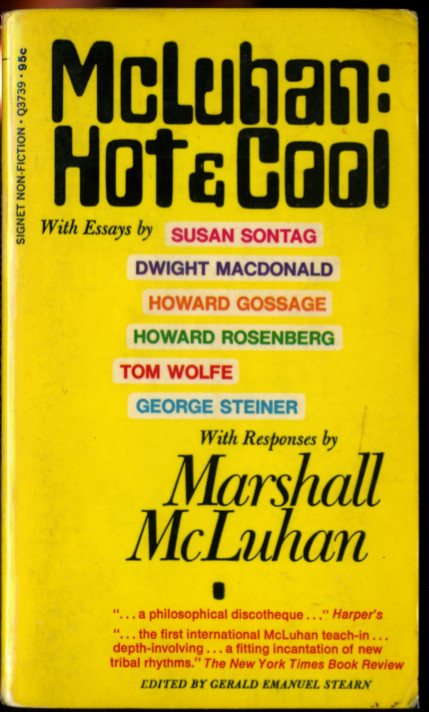Louis Kaplan: The Strange Case of William Mumler, Spirit Photographer (2008)
Filed under book | Tags: · 1860s, hauntology, photography, psychoanalysis, spirit photography, spiritualism

In the 1860s, William Mumler photographed ghosts—or so he claimed. Faint images of the dearly departed lurked in the background with the living, like his well-known photo of the recently assassinated Abraham Lincoln comforting Mary Todd. The practice came to be known as spirit photography, and some believed Mumler was channeling the dead. Skeptics, however, called it a fraudulent trick on the gullible, taking advantage of the grieving at a time of suffering and loss. Mumler’s insistence that his work brought back the dead led to a sensational trial in 1869 that was the talk of the nation.
In The Strange Case of William Mumler, Spirit Photographer, Louis Kaplan brings together, for the first time, Mumler’s haunting images, his revealing memoir, and rich primary sources, including newspaper articles and P. T. Barnum’s famous indictment of Mumler in Humbugs of the World. Kaplan also contributes two extended essays, which offer a historical perspective of the Mumler phenomena and delve into the sociocultural and theoretical issues surrounding this vivid ghost story.
Mumler’s case was an early example of investigative journalism intersecting with a criminal trial that, at its essence, set science against religion. The Strange Case of William Mumler, Spirit Photographer is the definitive resource for this unique and fascinating moment in American history and provides insights into today’s ghosts in the machine.
Publisher University of Minnesota Press, 2008
Fesler-Lampert Minnesota Heritage Books
ISBN 0816651566, 9780816651566
288 pages
Timothy Lenoir (ed.): Inscribing Science: Scientific Texts and the Materiality of Communication (1998)
Filed under book | Tags: · cartography, communication, germany, history of science, information, materiality, photography, science, semiotics, technology

Early practitioners of the social studies of science turned their attention away from questions of institutionalization, which had tended to emphasize macrolevel explanations, and attended instead to microstudies of laboratory practice. Though sympathetic to this approach—as the microstudies included in this book attest—the author is interested in re-investigating certain aspects of institution formation, notably the formation of scientific, medical, and engineering disciplines. He emphasizes the manner in which science as cultural practice is imbricated with other forms of social, political, and even aesthetic practices.
This book offers case studies that reexamine certain critical junctures in the traditional historical picture of the evolution of the role of the scientist in modern Western society. It focuses especially on the establishment of new disciplines within German research universities in the nineteenth century, the problematic relationship that emerged between science, industry, and the state at the turn of the twentieth century, and post-World War II developments in science and technology.
After an Introduction and two chapters dealing with science and technology as cultural production and the struggles of disciplines to achieve legitimation and authority, the author considers the following topics: the organic physics of 1847; the innovative research program of Carl Ludwig as a model for institutionalizing science-based medicine; optics, painting, and ideology in Germany, 1845-95; Paul Ehrlich’s “magic bullet”; the Haber-Bosch synthesis of ammonia; and the introduction of nuclear magnetic resonance instrumentation into the practice of organic chemistry.
Publisher Stanford University Press, 1998
Writing Science series
ISBN 0804727775, 9780804727778
476 pages
Gerald Emanuel Stearn (ed.): McLuhan: Hot & Cool: A Primer for the Understanding of & a Critical Symposium with a Rebuttal by McLuhan (1967)
Filed under book | Tags: · global village, information, literacy, mass media, media theory, photography, print, radio, semiotics, speech, technology, television, text, writing

“A brilliant amalgam of articles, discussions, essays and interviews with and about the Pop Oracle himself, The Complete McLuhan: the most controversial thinker of the electronic age.” (from the back cover)
With essays by Howard Luck Gossage, Tom Wolfe, John Culkin, SJ., Dean Walker, Kenneth E. Boulding, George P. Elliott, Rudolph E. Morris, Walter Ong, SJ., Ammunition (C.I.O.), William Blissett, Harley Parker, Robert Shafer, John Freund, Patrick D. Hazard, Dell Hymes, Frank Kermode, A. Alvarez, Dan M. Davin, Raymond Williams, Harold Rosenberg, Dwight Macdonald, Christopher Ricks, Jack Behar, Ben Lieberman, John M. Johansen, George Steiner, Jonathan Miller, Andrew Forge, Benjamin DeMott, Susan Sontag; responses by Marshall McLuhan; and an interview by Gerald E. Stearn with McLuhan.
Publisher The Dial Press, New York, 1967
Signet Non-Fiction series, Q3739
312 pages
PDF (no OCR)
Comment (1)
